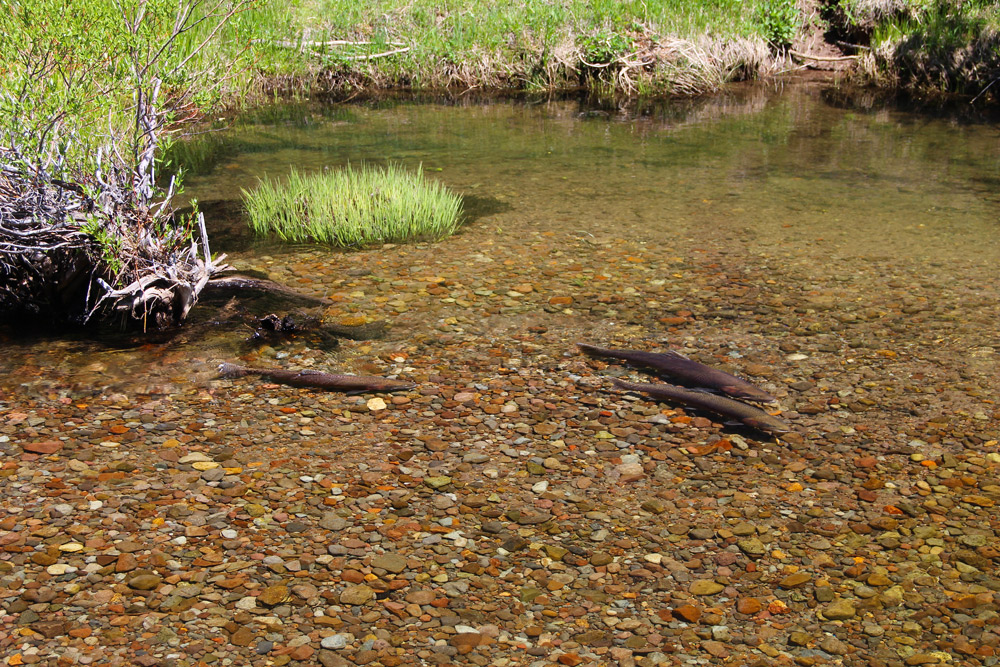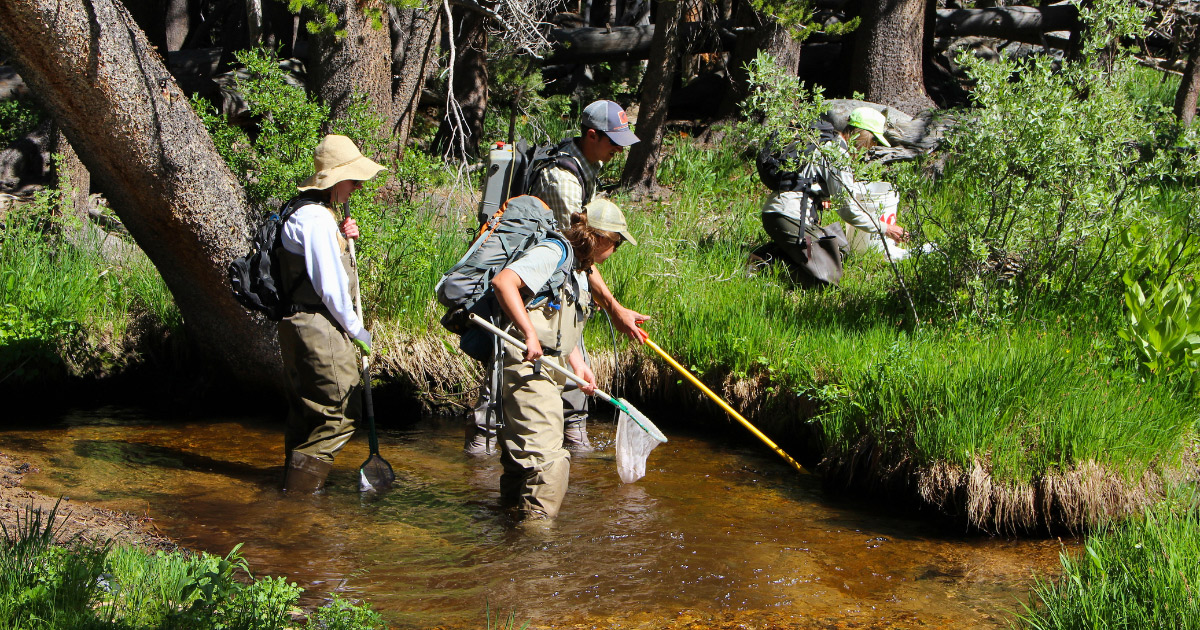Threatened Lahontan Cutthroat Trout Receive Help in the Walker Basin
Lahontan cutthroat trout (LCT) were once widespread across high-elevation mountain streams and lakes in California and Nevada including Lake Tahoe. Today, they are much harder to find. Approximately 95% of the species has been extirpated from their historic habitat in California largely due to introduction of non-native trout species and habitat alterations by human land use activity. In the Walker Basin, part of the LCT’s native range, CalTrout is partnering on restoration projects to eliminate non-native trout populations from the system and help maintain these LCT populations.
Silver Creek is a tributary to the West Walker River, and LCT populations can be an indicator for drought resistance in the greater Walker Basin. When these fish are struggling, it likely means that rivers and streams are also in bad shape.
In Silver Creek, CalTrout works with the California Department of Fish and Wildlife (CDFW) to remove non-native brook trout. Before beginning removal efforts, staff took eDNA samples of the creek. These samples provide information about where certain species are present or absent from a watershed. From the samples taken we found that towards the headwaters of the creek there was an absence of invasive brook trout while lower in the stream they were present. Knowing where non-native species are in the watershed helps us focus our removal efforts.
To remove these fish, staff work to first divert the creek and then to pump-dewater to lower the water level. Once the water is lowered, staff use electrofishing to stun, capture, and separate fish by species. The non-native brook trout are eliminated from the system. Brook trout are native to the East Coast, but on the West Coast they are a prolific non-native species. When possible, they are re-located to closed systems that do not impact native species, but sometimes they must be culled. Funding for this project comes from CDFW, the US Fish and Wildlife Service, and the Keefe Family Foundation.

We are also actively working at By-Day Creek, another watershed in the Walker Basin and the LCT source population for Silver Creek. By-Day Creek is in northern Mono County within the 460-acre CDFW ecological reserve. The By-Day Creek Forest Health Project is a collaborative project with CDFW to implement thinning of overly dense white fir forest understory. This will improve forest health and reduce the threat of catastrophic wildfire on this stream and watershed to protect LCT populations.
Next year, CalTrout staff will expand work in the Walker Basin to Slinkard Creek where non-native fish removal efforts will continue. LCT are currently listed as threatened under the Federal Endangered Species Act. CalTrout and our partners are hard at work to try and change that so these fish may once again thrive in California’s mountain streams and lakes.
Cover Photo: Field crew in Silver Creek






2 Comments
I’m interested in receiving more information about preserving Lahontan Cutthroat Trout and CalTrout.
Hi Michael! Please feel free to sign up for our mailing list for any updates on our efforts to restore LCT populations! You’ll also get lots of info on CalTrout that way. Thanks! Sign up here: http://eepurl.com/dO5iHH